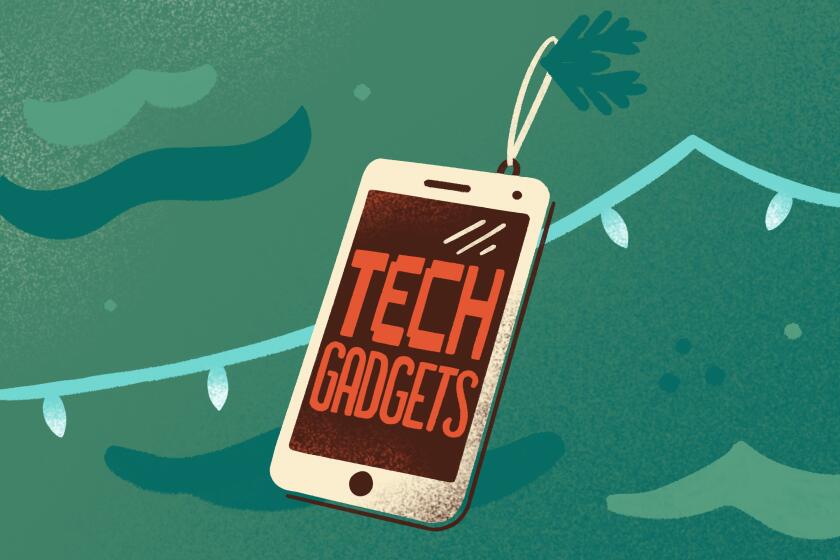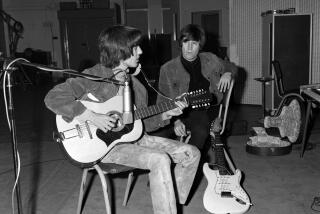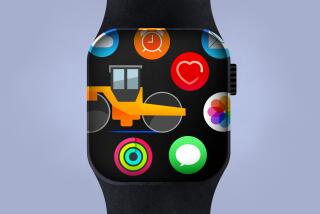Apple-1 computer, ‘holy grail’ of vintage tech, to be auctioned off in Southern California
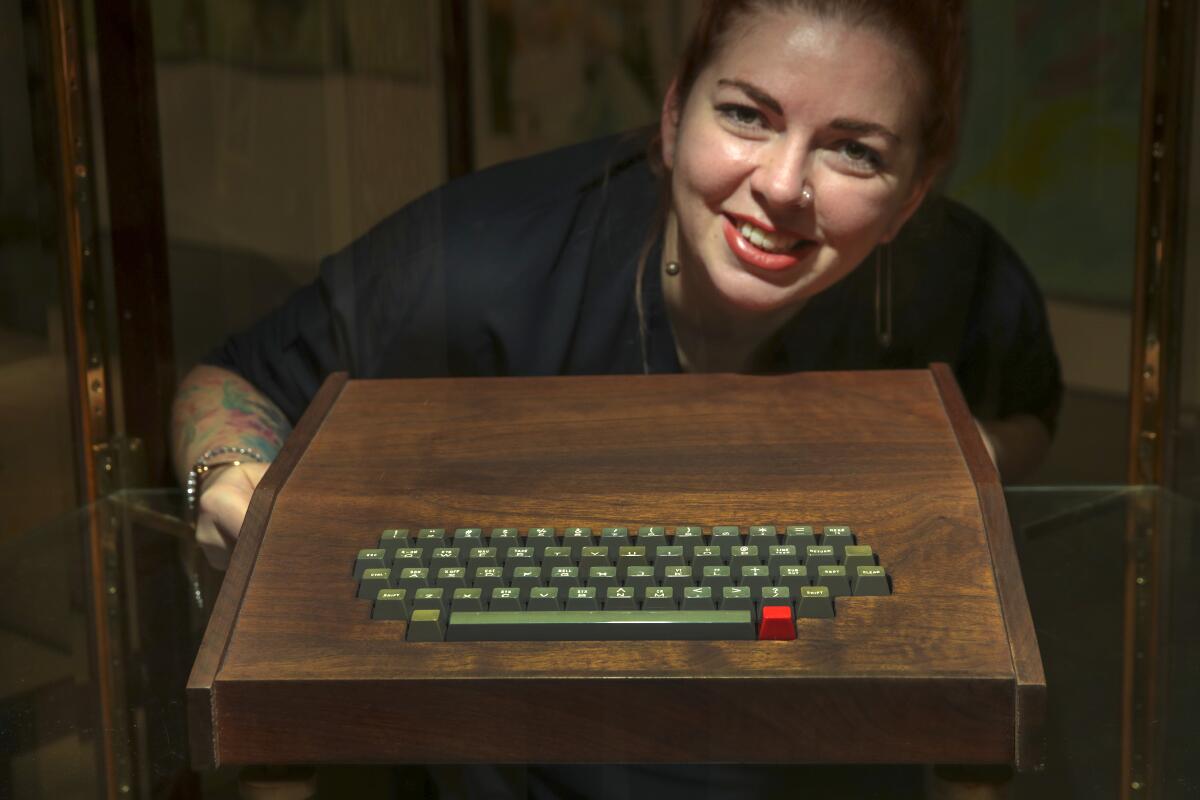
- Share via
Apple’s new-model, top-of-the-line MacBook Pro laptop computer could set you back nearly $4,000 before taxes.
But that will seem like a Black Friday steal when a 45-year-old Apple computer goes on sale this week in Monrovia, where it may fetch six figures or more, even without a 16-inch, high-definition screen and the latest microprocessors.
On Tuesday, John Moran Auctioneers will auction off a functioning Apple-1 computer hand-built by Steve Wozniak, Steve Jobs and others in a Los Altos, Calif., garage in 1976. The system was the rock upon which the trillion-dollar Apple empire was built.
In his 2011 biography “Steve Jobs,” Walter Isaacson quotes Wozniak as saying of the Apple-1: “We were participating in the biggest revolution that had ever happened, I thought. I was so happy to be a part of it.”
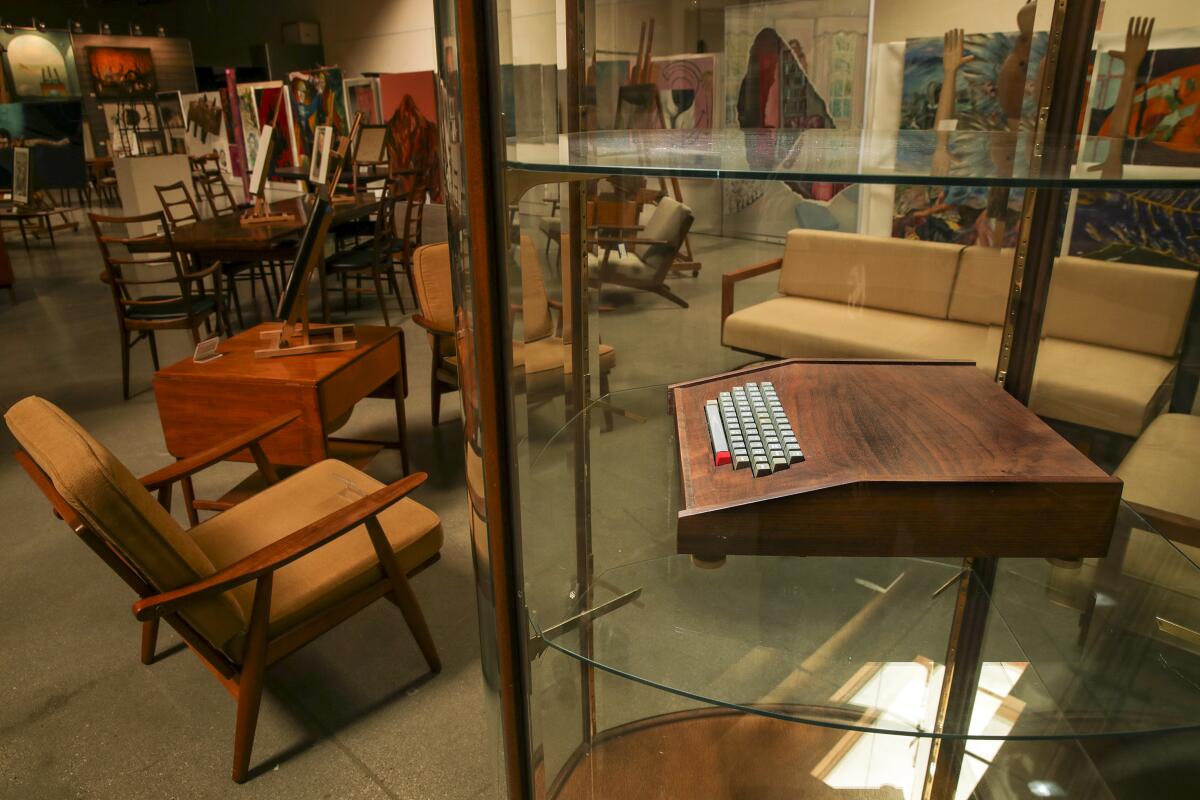
The unit is dubbed the “Chaffey College Apple-1” because its first owner was identified as a Chaffey professor. It was unearthed from the Rancho Cucamonga home of a former Chaffey student who had purchased it from the professor for $650 in 1977.
The student, who wishes to remain anonymous until after the sale, held on to the computer for the next four decades.
The investment may pay off as auction house and Apple-1 experts expect the unit to sell for close to $500,000, if not more. The estimates are not unfounded; an operational unit was sold for $905,000 by Bonhams auction house in 2014.
“This is kind of the holy grail for vintage electronics and computer tech collectors,” said Corey Cohen, an Apple-1 expert. “That really makes it exciting for a lot of people.”
Follow a container of board games from China to St. Louis to see all the delays it encounters along the way.
Cohen has made a career of examining, authenticating and refurbishing Apple-1 units for auction houses and others and was called in by John Moran to do the same.
About 200 Apple-1 units were assembled by Wozniak, Jobs and others, 175 of which were sold. About 60 Apple-1 units still exist, Cohen said, with only about 20, including the Chaffey unit, capable of functioning.
Cohen said the unit was not in “bad condition” when he examined it, although the keyboard required complete rebuilding.
But the Chaffey unit is made unique, and possibly more valuable, by its koa wood case, its accessories and its provenance, Cohen said.
Apple-1s, as assembled by Wozniak and Jobs, were sold mostly as bare-bones boards and did not include screens, keyboards or cases, far from the polished metal-and-glass Apple products sold today.
The Byte Shop, a Bay Area computer store, commissioned the nascent company to build 50 Apple-1 units, and upon delivery the owner was “a bit taken aback,” Isaacson wrote.
“He had expected something more finished. But Jobs stared him down, and he agreed to take delivery and pay,” Isaacson said.
The Byte Shop spruced up the boards, enclosing them in an economical-at-the-time koa wood case.
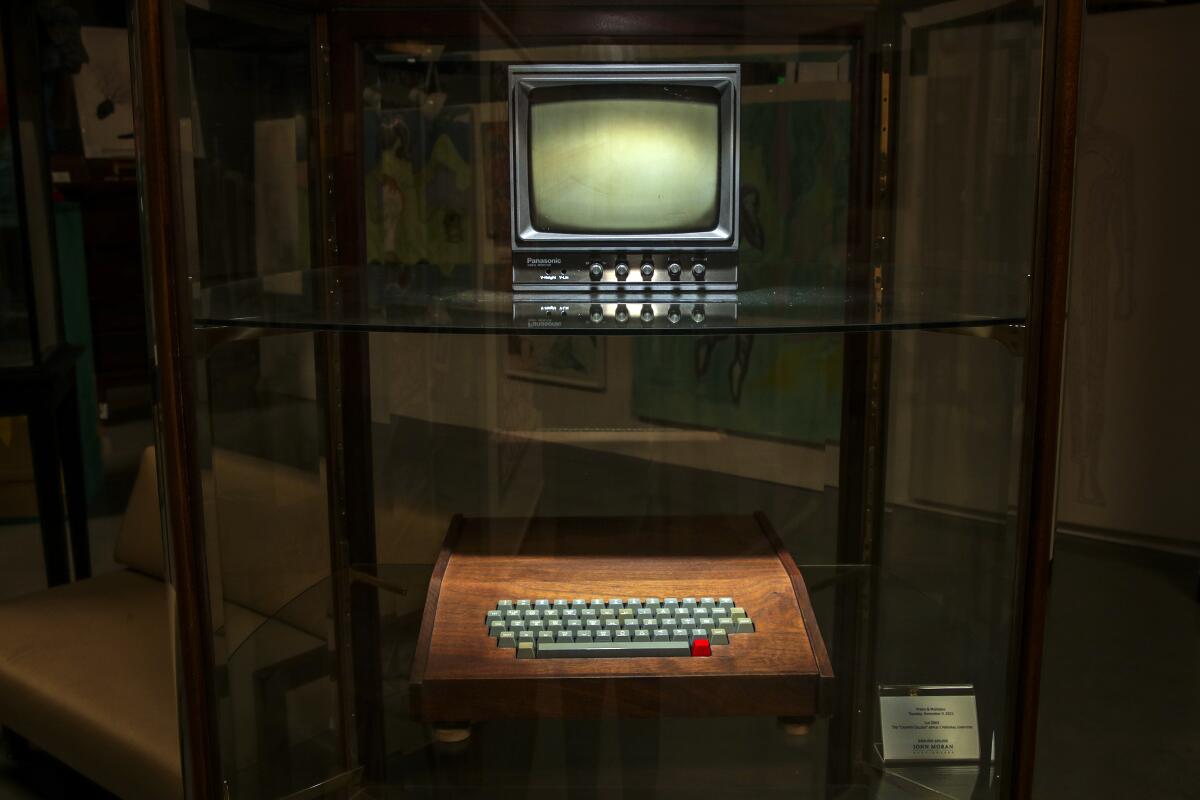
Koa wood is now a high-priced commodity, and there are only a handful of Apple-1s with the cases, Cohen said.
“It has all the pieces and it has some really good provenance,” he said. “We can pretty much track it back to the original professor who owned it.”
The professor sold the unit to his student to fund an upgrade to the Apple-II.
“One of my reactions was, ‘Wow, I don’t know who that instructor is, but I hope they’re not reading the news now and thinking about how they sold it for $600,’” said Steve Siedschlag, a computer science professor at Chaffey. Siedschlag and his colleagues have so far been unsuccessful in identifying the professor.
“It’s pretty cool that it did go through our halls and now everybody’s hearing about it,” he said.
The unit stayed in the student’s possession until Noelle Valentino, department manager for trusts and estates at John Moran, gave a talk to financial planners and wealth advisors, urging them to have their clients comb through belongings for hidden treasures.
A wealth advisor who attended the lecture began asking his clients regularly if they had any belongings that might be valuable.
One client thought he might, bringing forward a computer that he had been hanging on to for 40 years.
Upgrade the way you and your favorite people live with these digital doodads.
The computer crossed the desk of Valentino, whose background lies in art and antiquities.
“At first I really wasn’t sure what it even was,” Valentino said. “But I was intrigued enough by the sounds of it, the first Apple computer.”
“I thought, ‘I’m going to just ask about this to some other colleagues.’ They were the ones that really almost fell over when they heard that we have this opportunity,” she said.
“When you see certain items, you just know that they’re going to be showstoppers,” said Nathan Martinez, advertising and marketing director at John Moran. “The Apple-1 is one of those.”
Absentee bidding for the computer opened at $200,000 last week. The most current bid as of Friday afternoon was $250,000.
“A lot of people just want to know what kind of a person collects Apple-1 computers and it’s not just people in the tech industry,” Cohen said.
People in arenas from politics to cosmetics have Apple-1s, he said.
Cohen himself owns an Apple-1 unit, but even the chance at a six-figure payday is not enough to get him to sell.
“I don’t need to sell mine,” he said. “My kids will have to deal with that.”
More to Read
Sign up for Essential California
The most important California stories and recommendations in your inbox every morning.
You may occasionally receive promotional content from the Los Angeles Times.

